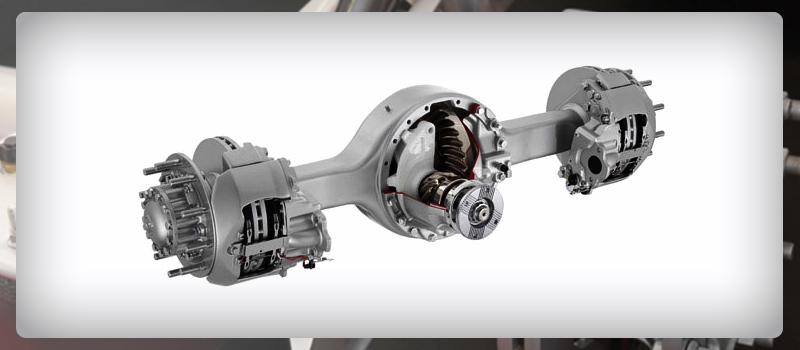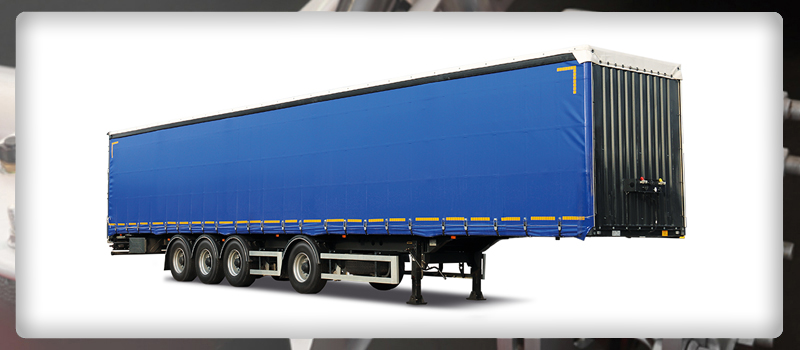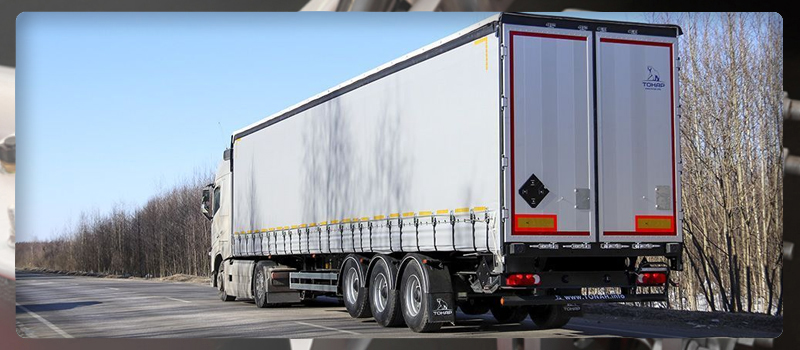Commercial Vehicles Optimized Air Brake System
The braking stability has significant importance for commercial vehicles, especially tractor-semitrailer. However, the brake lag of air brake system brings serious safety risk to the vehicle. To improve the braking stability of tractor-semitrailer, an optimized air brake system is proposed. Using characteristic of the fast exhaust response of spring brake cylinder of composite brake chamber, a normally open solenoid valve and a normally closed solenoid valve are connected with the spring brake cylinder of composite brake chamber of semitrailer to control the spring brake force, which responds more quickly than service brake force. A strategy is proposed to control the difference between the actual braking torque of the semitrailer brake and the target braking torque and is simulated based on AMESim and SIMULINK. An experiment is made to verify the effectiveness of the optimized system. The simulation shows that the improved scheme reduces the response time of semitrailer brake system by 0.19 s, and effectively restrains the lateral movement of the vehicle downhill braking and improves the stability of the braking direction of the vehicle. And the experiment indicates that the brake of semitrailer responds earlier than tractor, which means the brake lag is improved significantly.

As a major road transport vehicle, tractor-semitrailers are often at full capacity, which proposes higher requirements of braking stability. Air brake system is often applied to tractor-semitrailer as primary braking system, because it can provide large braking force with small pedal force and short pedal stroke, meanwhile, using air as medium, there is no need to considering the issue of medium recovery, and the sealing requirements of the system is also lower than the hydraulic braking system. A typical air brake system contains pneumatic subsystem and mechanical system and includes air compressor, storage reservoirs, treadle valve, quick release valve, parking brake control valve, relay valve, brake chamber, and trailer control valve.
However, with the increasing speed of the modern vehicles, the braking load of the vehicle is also increasing, especially for the tractor-semitrailer, and the problem of excessive brake load is becoming more prominent. Tractor-semitrailers, often driven in mountainous areas, have to go long downhill. In order not to accelerate to a dangerous speed due to the action of its gravity, the vehicle needs brake continuously. In addition, complex road conditions require frequent braking of different intensities. In these cases, long-time frequent work will not only make its temperature increase greatly, but also cause brake fade, and even the braking efficiency declines or fails completely.
The hydraulic retarder can be used to augment or replace some of the functions of primary friction-based braking systems. It is usually used as an additional “assistance” to reduce speed, so that the main brake will achieve an increased life. Hydraulic retarders convert the kinetic energy of the vehicle into heat energy of the fluid. The oil is pumped into the working chamber, when retarder is required, and then the vanes, attached to the transmission driveshaft in the chamber, churn the oil to induce viscous drag to decelerate the driveshaft. The working oil will heat and circulate in the cooling system.
Due to the length of pneumatic tube and the response time of pneumatic components of air brake system, longer time is required for the compressed air to reach the brake chambers in semitrailer than in tractor, and the time difference is called brake lag. The brake lag makes semitrailer produce a braking force later than the tractor, which may cause an impact force between tractor and semitrailer and introduce unstable situations, such as folding and drift, and these situations may lead to serious traffic accident. However, as the retarder could produce braking torque much faster than air brake system, which means tractors with hydraulic retarder brake earlier than those without hydraulic retarder, hydraulic retarder may make brake lag worse. Thus, it is significant to reduce or avoid brake lag.
Some research has been done with brake lag nowadays. Ma et al. reduced the brake response time by optimizing the diameter of pneumatic pipe of the air brake system. He optimized the parameters such as the exhaust space of the brake valve and the relay valve and the diameter of the pneumatic line to reduce the brake lag. Karthikeyan and Subramanian proposed a proposal using an electronically controlled regulator instead of the foot valve to improve the braking response of the air brake system. Kumav et al. shortened the time required for brake start-up by adding PID (proportional integral derivative) controllers based on the research of Karthikeyan P. Wang et al. designed an electronic pneumatically controlled auxiliary brake device using a high-speed on–off valve. The device uses a PI controller output pulse width signal to regulate the open and close state of the high-speed on–off valve to control the brake chamber air pressure to reduce the response time of brake system. Zhu et al. proposed a set of hysteresis compensation system for the brake lag of semitrailer. The system adds two inflation valves, two isolation valves, two exhaust valves, and two one-way valves to the original car air brake system, and electronically controls the inflation valve and the exhaust valve to overcome the brake lag. Qi et al. proposed a hysteresis control method for pneumatic brake system based on closed-loop feedback. The controller was designed based on PID, and the feasibility and effectiveness of the scheme were verified by simulation. Lu proposed to use the electronic control system to control the pneumatic brake system, and designed the trailer air brake electronic control system, thus achieving the optimization goal of the trailer brake coordination consistency. Rajaram and Subramanian developed nonlinear controller for heavy commercial vehicle based on Lyapunov theory. The controller was tested and compared with a controller developed using a linear full state feedback controller. It was proved that the nonlinear controller has an advantage in terms of reduced brake delay.
Current techniques used to reduce brake lag can be broadly divided into four categories: improving the structure of pneumatic valve, optimizing the parameters of pneumatic components and pipe, adding high-speed switch valve, and applying PID controller. But hydraulic retarder is not considered when calculating the brake lag. In this article, an improved structure of air brake system is proposed to decrease the brake lag of tractor-semitrailer-equipped hydraulic retarder; the simulation and experiment are also made to verify the effect of the new structure.
The organization of this article is given as follows: in the next section, the improved scheme of air brake system is presented. Then the simulation model based on AMESim, SIMULINK, and TruckSim is developed. Next, the control strategy is proposed and developed in SIMULINK. Then the analysis of brake lag and lateral movement stability are made to validate the effectiveness of the optimized air brake system. And experiment is also made to verify the improved structure. Finally, conclusions regarding the presented study are given.
Introduction of the optimized air brake system
The semitrailer in this article is equipped with composite brake chamber, which is consisted of spring brake cylinder and service brake cylinder, and the exhaust speed of spring brake cylinder is much faster than inflating speed of service brake cylinder. So the service brake cylinder can produce faster if using the air from exhaust port of spring brake cylinder as input instead of original input at the begging of braking process. Plus, a normally open solenoid valve and a normally closed solenoid valve are added into air brake system to control the spring brake cylinder electronically, which can reduce the time to receive control signal significantly. Target braking torque of semitrailer is calculated by ECU (electronic control unit) (1) in accordance with the displacement of tractor brake valve mandrel and braking torque of hydraulic retarder, then the normally open solenoid valve (7) and normally closed solenoid valve (8) are powered on or off according to the difference between actual and target braking torque to control spring brake.
Leave words, your message replied in 24hours.
Toget Brake
Brand Vision:"to become the China leading supplier of active vehicle safety systems within the commercial vehicle industry."
At Toget, focus on air disc brake calipers technics, exceeding industry standards is a strict requirement.

Brand names, original numbers, vehicle mark and models are only for reference purposes.






